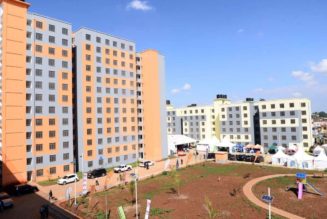Columnists
Lessons from India’s fast growth
Thursday February 02 2023
India’s Finance minister Nirmala Sitharaman (center) leaves the Finance ministry to present the annual budget in the parliament in New Delhi on Wednesday. FILE PHOTO | AFP
India is currently the fifth-largest economy in the World. It is ahead of Great Britain, which colonised the country for 89 years.
Moreover, this South Asian nation is ambitious to become the third largest economy behind the US and China within this decade.
And it is worth noting that between 2005 and 2021, India rescued 415 million from the jaws of poverty.
Although millions of Indians are still poor, the pace of economic progress could see the remaining 16 per cent out of distress by the end of the decade.
How did India manage to accelerate its economic growth?
While speaking at India’s 75th Independence Day in Brussels last week, Mr Santosh Jha, the country’s Ambassador to Belgium, Luxembourg, and the European Union (EU), revealed to a group of diplomats attending the event how his economy leapfrogged.
Santosh’s futuristic speech failed to reveal the past, leaving the audience to imagine the process that catapulted the country from abject poverty in the 1960s to becoming a geopolitical force.
However, his many anecdotes revealed how India leapt to where it is. We are now the factory of the World, and the booming pharmaceutical industry saved the World from Covid-19, he emphasised.
In addition, India today is a global hub for information and communications technologies, textiles and other heavy industrial products.
He reminded the audience that the country had abundant well-educated young people and a skilled labour force.
In addition, the country has adequate infrastructure, including transportation, energy, and communication systems.
He further emphasised that political stability and sound government policies have created a conducive environment for economic take-off.
Therefore, it is apt to ask: How did India find her growth formula, and what can Africa learn from it?
For 40 years, India struggled to search for a suitable economic model. Initially, the government adopted an economic strategy focused on industrialisation through centralised planning.
The State raised resources and invested in government-owned enterprises to produce primary and heavy industry products.
The strategy of industrial development over agriculture started to buckle in the 1960s. Furthermore, inefficient State-run enterprises had swallowed investment resources, thus starving agricultural production.
Also read: NDEMO: Turning those ideas into innovation
As a result, India plunged into a food crisis, forcing the government to seek grain imports, mainly from the US.
The policy failure led to several years of economic stagnation, characterised by high inflation and loss of public confidence in political leadership.
Fortunes began to change in early1990’s with the collapse of the Soviet Union.
As a result, India erased the inward-focused central planning economic model in favour of the export-led path taken by Asia’s newly industrialised countries (NICs).
The country made several policy changes with little help from the International Monetary Fund (IMF) during the foreign exchange crisis.
They eliminated restrictions on price controls, made it easier to register companies, lowered tax rates and import taxes, sold State-owned enterprises and allowed foreign investors into the country.
Although India’s economic rise cannot be compared to Africa, there are lessons the continent can learn.
Besides policy changes that triggered the change, the internal market with no restrictions between states is central to economic development.
There are similarities that Africa needs to harness. The youthful population is an asset only if the continent exploits the opportunity through rapid skilling and re-skilling of the people to create a large pool of a globally competitive labour force.
And with good infrastructure in energy, transport and ICTs, job opportunities will be boundless, with some of them taking the track of innovation that is critically essential to the future of development.
Africa can ensure that the removal of trade barriers achieves the actualisation of the Africa Continental Free Trade Area (AfCFTA).
The time has come for the continent to deliberately set some targets around vision 2063. For example, the continent should aim for a $10 trillion economy by the end of this decade.
Also read: NDEMO: Decolonising education in Africa
This can be achieved by exploiting resources such as land by focusing on large-scale agricultural production and developing new value chains from agro-processing.
Because India did it to an extent, Africa must eliminate cultural practices that impede economic progress.









